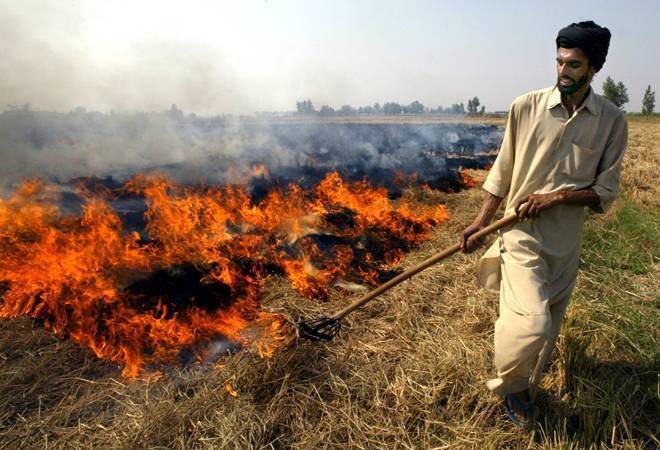It’s that time of the year again. Dussehra has come to an end and Diwali is just around the corner. It means that the citizens of Delhi are already in the middle of an annual pollution season wherein the air quality becomes so severe that it makes the nation’s capital look like a “gas chamber.” The dip in air quality has already started happening, and it is expected to get worse after Diwali. The problem of Delhi’s air pollution, however, is believed to be mainly aggravated by stubble burning in Punjab and Haryana. But what is it all about, and is it the only major factor that can be held accountable for Delhi’s air quality dip?
What is Stubble Burning All About?
The problem of stubble burning is one that is not new in India. It originated sometime in the mid-1980s when mechanized harvesting for wheat and paddy was introduced. It mainly involves the burning of crop residue in order to remove them from the field and sow the next crop. Farmers in Punjab and Haryana get a very short interval to plant Rabi crop (winter crop). They can’t leave their crop residue in the open as it would then make way for pests to attack the new crop. Therefore, they resort to burning in order to get rid of their stubble as quickly as possible. This is the only cheapest option available to these farmers.

Many farmers are perfectly aware of the fact that stubble burning contributes to the overall degradation of air quality, but they argue that they don’t have any other choice. They simply can’t afford the expensive machines that can be used to manually remove the leftover paddy straws from their fields. The farmers also blame the government for not providing them with subsidies or any effective solution to this problem.
How does Stubble Burning affect the environment?
Stubble burning releases large amounts of toxic pollutants in the atmosphere which contain harmful gases like carbon monoxide, methane, and volatile organic compounds. Each year, the winds coming from the northwest pick up the pollutants released as a result of stubble burning in Punjab and Haryana, and bring them to Delhi, thus deteriorating its air quality significantly.
The current scenario
The situation is unfortunately the same this year. In fact, 9,434 cases of stubble fire occurrence were reported between September 21 and October 21 in Punjab alone this year. While it’s true that there are other factors also responsible for Delhi’s poor air quality, stubble burning is a factor that really stands out. Recently, SAFAR (System of Air Quality and Weather Forecasting And Research) shared data that claims that the contribution of stubble burning to Delhi’s air pollution rose to 40 percent in a single day (Sunday, November 1). It is said that 2.2 million children in Delhi suffer from irreversible lung damage due to Delhi’s toxic air. These facts are really worrisome in themselves and they serve as a bitter reminder of Delhi’s horrific air condition.
Recently, the Centre introduced a new law through an ordinance to set up Commission for Air Quality Management in National Capital Region and Adjoining Areas, a body that will have jurisdiction over states like Haryana, Punjab, Rajasthan, and Uttar Pradesh – states that mostly contribute to Delhi’s air pollution. Many efforts have been made by the government in the past, but it seems that they haven’t really been successful in curbing Delhi’s air pollution.
The air quality dip, which has now been happening for many years during this time of the year, is one that is now viewed as quite “normal” by some of the citizens of Delhi. But one simply can’t “adjust” with a problem whose long-term effect is actually death itself. For poverty-stricken farmers, stubble burning seems to be the only affordable solution to get rid of the excess crop. Although some of them have indeed come up with their own innovative ways to deal with this situation, the problem of stubble burning still persists, and it’s one that can be considered as a consequence of poverty only.
Also Read: Enactus Hansraj College’s Project Vriddhi Aims At Reducing Stubble Burning By Farmers
